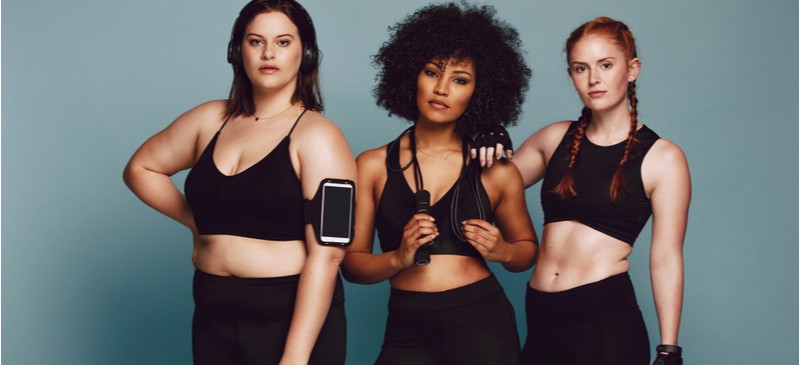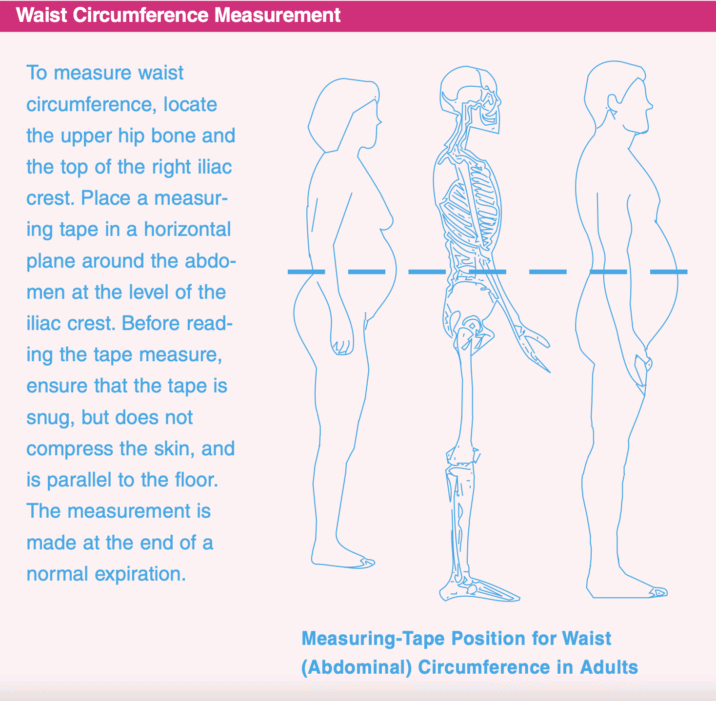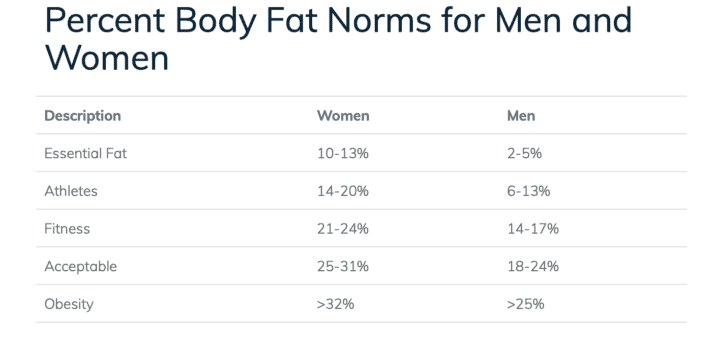Body Composition: Can We Outwit Our Genes for Healthy Body Fat Levels? (original) (raw)
Fact Checked
This Dr. Axe content is medically reviewed or fact checked to ensure factually accurate information.
With strict editorial sourcing guidelines, we only link to academic research institutions, reputable media sites and, when research is available, medically peer-reviewed studies. Note that the numbers in parentheses (1, 2, etc.) are clickable links to these studies.
The information in our articles is NOT intended to replace a one-on-one relationship with a qualified health care professional and is not intended as medical advice.
This article is based on scientific evidence, written by experts and fact checked by our trained editorial staff. Note that the numbers in parentheses (1, 2, etc.) are clickable links to medically peer-reviewed studies.
Our team includes licensed nutritionists and dietitians, certified health education specialists, as well as certified strength and conditioning specialists, personal trainers and corrective exercise specialists. Our team aims to be not only thorough with its research, but also objective and unbiased.
The information in our articles is NOT intended to replace a one-on-one relationship with a qualified health care professional and is not intended as medical advice.
June 25, 2024
- What Is Body Composition?
- What Affects It?
- How to Assess
- How to Measure Body Fat
- How to Improve Body Composition

Growing up in a small town in England, Rebecca Louise started really obsessing over her body composition around age 15 — and not in a good way.
A trained dancer and athlete who played “every sport,” she switched schools in her teens and became surrounded by less-than-supportive classmates, something that left her feeling not in control of her life. But she said the one thing she could manage was food, and that control spiraled to unhealthy extremes.
At 5-foot-2 inches tall, she weighted just 86 pounds at one point in secondary school, England’s version of high school.
“I started to control food by not eating anything at all. I was working out all of the time,” she recalls.
The story she was telling herself was that being anorexic and thin would bring happiness, but it did just the opposite. With bad skin, low energy and thinning hair, her struggle with body composition made her shut out the world.
Ad
“It really took a toll on my life. I was a recluse,” she recalls in a podcast episode with Dr. Josh Axe.
In the following years, Rebecca moved to California and started working out, but she couldn’t shake her unhealthy focus on weight. Today, she acknowledges that she even used recreational and prescriptions drugs to suppress her appetite in the 1990s — a time when the world seemed obsessed with “size 0” culture, she says.
Eventually, Rebecca says she was able to develop a healthy relationship with food and turned to exercise and optimizing nutrition to build a healthy mind and body. Today, she is dedicated to helping others develop healthy body composition, too.
A certified fitness trainer through the National Academy of Sports Medicine, she’s also the creator of the popular Burn training app that helps people build healthy workout, nutrition and journaling habits to build better lives.
What Is Body Composition?
There are four components of body composition. These include:
- Fat
- Body water mass
- Minerals
- Protein
However, most of us are more familiar with the two-component method that simply divides our bodies into two parts: fat and fat-free mass.
While many of us focus on weight, putting a stronger focus on striving for a healthy body fat percentage could create a better body. That’s because a healthy body composition is a tool to help reduce your risk of diseases like cancer, heart disease and diabetes.
Although some fat is required for human survival, carrying too little body fat can indicate eating disorders like anorexia nervosa and/or trigger female athlete triad symptoms.
On the other hand, carrying too much body fat, including visceral fat that encases organs, increases your risk of a range of metabolic disease and other major health threats.
What’s considered “fat-free mass?” Well, it includes all of the components of your body that aren’t considered fat.
These include things like:
- Organs
- Muscle
- Water
- Connective tissue
- Bones
Although all of these things are considered fat-free mass, when we’re talking about body composition in terms of fitness, the focus is definitely on working toward optimal muscle mass and getting body fat levels within ideal range.
Now, you may be thinking, “I don’t have much control over this. My body type is genetic.”
Though your genes certainly do influence your body type to some extent, you are not a prisoner of your genetics. Bringing nutrition and movement into your life can certainly cultivate a healthier body composition.
“The No. 1 principle is knowing that you have a choice about everything that you do,” Louise reminds us. “You really have a choice whether you want to be healthy. And if you’re choosing not to be, that’s up to you. But when you have that choice inside you and you know that you have complete control, you’re actually free.”
Ad
What Affects It?
You may have grown up believing you’re a victim of your genes, thanks to an idea theorized by Dr. W.H. Sheldon in the 1940s. He proposed there are three main body types or “somatypes” based on inherited composition traits.
Sheldon proposed that these traits were set in stone and couldn’t be changed. He also theorized that certain personality traits are linked to specific body types. (Scientists debunked this in subsequent research.)
Sheldon’s body types and examples of body types and related characteristics include:
- Ectomorphs: Thin and “fragile” or “fine-boned”
- Endomorphs: Round, soft bodies
- Mesomorphs: Square, muscular builds
As the National Academy of Sports Medicine points out, some of Sheldon’s findings have held up over time, although many have not. As it turns out, genetics, environmental exposures, access to food and our habits all play roles in composition of our bodies.
Why is this good news? It means we aren’t necessarily stuck with what we inherited.
You can use your individual body type and experiment with different exercise and nutrition methods to create a better body that works for you.
How to Assess
How do we measure body composition, and what does healthy body composition look like?
Many health professionals often rely on the BMI chart to determine a person’s weight category. The categories include underweight, normal, overweight and obese ranges.
This serves as a quick and easy way to possibly highlight potential risk of obesity-related diseases or eating disorders.
The meaning of BMI is body mass index. Its formulation is based on weight comparative to height, but it’s far from a perfect system.
Limitations of the BMI chart include not taking into account other things that can impact the composition of a person’s weight. These include:
- Unique body composition
- Ethnicity
- Age
- Gender
- Muscle mass
- Bone density
- Fluid retention
By focusing on body fat percentages and not just BMI, you can get a clearer picture of your body makeup and work to make improvements to benefit your health.
The American Council on Exercise offers the following chart to help us understand healthy body fat percentage ranges — and levels that signal obesity:
So how can we know how to calculate body fat? There are several different body composition test options, and these range from relatively cheap, basic techniques to more complex measurements generally not accessible to the general public.
Let’s take a look…
How to Measure Body Fat
Body composition is important because, as discussed earlier, we can optimize our composition to live healthier lives and reduce the risk of disease. Some forms of body composition measurement are very accessible and inexpensive, while others are pricy and only available in university or hospital settings.
Some ways people undergo body composition measurements include:
Skinfold measurements
- Skinfold caliper measurements are an easy and affordable way to measure subcutaneous fat just under the skin.
- Measurements are a quick way to estimate body composition, but it can pinch a bit.
- There is some room for error (up to about 5%), so look for a skilled certified trainer or clinician to take your measurement.
BMI
- Body mass index is calculated using height and weight, making it a simple, fast and free tool.
- It is predicative of type 2 diabetes in adults, but it may not be for children and adolescents.
- As noted above, BMI can’t distinguish between fat and lean body mass, so accurate readings are difficult, particularly in very muscular people.
- On the flip side, you could appear to have a healthy body weight but harbor hidden visceral fat on the inside, known as being “skinny fat.”
- Don’t use BMI exclusively as a body composition test. Consider pairing with skinfold measurements.
Waist circumference
- This technique measures central fatness, a calculation that could be more predicative of high cholesterol, triglycerides and insulin resistance than BMI.
- According to the U.S. Centers for Disease Control and Prevention, “excessive abdominal fat may be serious because it places you at greater risk for developing obesity-related conditions, such as type 2 diabetes, high blood pressure and coronary artery disease.”
- This measurement is for adults. A male with a waist circumference more than 40 inches and a non-pregnant woman with a waist circumference more than 35 inches face a higher risk of developing obesity-related diseases.
- Below is how to measure your weight circumference, according to the National Institutes of Health.

Here are some other ways to measure body composition, although these are not as accessible and/or affordable as the methods above:
- Dual Energy X-ray Absorptiometry (DXA)
- Densitometry
- Air Displacement Plethysmography
- Hydrometry
- Bioelectric Impedance Analysis (BIA)
How to Improve Body Composition
Your genes and prenatal exposures don’t lock you in to a specific body composition for life, but they certainly can impact things. And consider this: When it comes to “fetal and postnatal imprinting,” research now shows that a mother’s environment, habits and diet during pregnancy can have lasting consequences on body weight and risk of chronic disease in her offspring.
Regardless of your situation, you can start changing your body composition to a healthier profile.
Although there are certain situations where underweight folks need to increase fat mass, in general most people will focus on two key things when it comes to how to improve body composition:
- Upping your lean body mass
- Lowering your fat mass
Here’s how to start doing it…
1. Support your gut
Studies show that overweight and obese people tend to have less diversity in their gut microbiomes. Focusing on repairing your gut is a key, and an often overlooked, aspect of improving your body composition.
To start repairing your gut:
- Cut out as many processed foods as possible.
- Greatly reduce added sugars in your diet.
- Avoid using pesticides and other harsh chemicals.
- Find exercise or movement that works for you, and get a session in every day. Even little mini sessions of body composition exercises add up!
2. Focus on soluble fiber
Everyone is different, so finding an eating style that works for you is key. That said, reducing the amount of refined added sugars and other refined carbohydrates you eat is vital, and while doing that, also focus on increasing soluble dietary fiber to reduce body fat.
One five-year study found that mixing moderate exercise with a diet high in soluble fiber decreased the rate of dangerous visceral fat accumulation by 7.4 percent.
Soluble fiber increases the diversity of your gut bacteria and also helps you feel fuller longer.
Some robust sources of soluble fiber include:
- Brussels sprouts
- Black beans
- Oats
- Avocados
- Turnips
- Pears
3. Cut back on alcohol — or cut it out altogether
Even a relatively small amount of alcohol, like a half a shot of vodka, can cause individuals to eat more calories compared to people who don’t drink alcohol.
Alcohol also disrupts healthy sleep patterns, and research shows people eat, on average, an extra 83 calories per day for each 30-minute sleep deficit they experience compared to non-drinkers.
Louise said she pretty much stopped drinking alcohol in 2019 and noted it’s a “big thing to step away from if you want results fast.”
4. Hydrate, hydrate, hydrate
A 2016 Harvard study found that increasing the amount of water you drink daily by one to three cups could reduce the amount of calories you eat by 68 to 205 calories a day, leading to significant weight loss.
Typically, hydration recommendations call for drinking 25 percent to 50 percent of your body weight in ounces a day, and you’ll need to take in more water if you’re very active.
5. Consider intermittent fasting a few days a week
Several times a week, try intermittent fasting, such as 16/8 fasting. That means you avoid eating (you can drink drink water) for 16 hours, followed by an eight-hour window where you can eat.
Some studies suggest fasting helps reduce body fat better than calorie restriction alone. A 2016 study found coupling an eight-week 16/8 fasting program with resistance training reduced body fat, increased lean muscle mass and improved blood lipid levels.
6. Care about stress reduction as much as calories
A high-stress lifestyle floods your body full of fat-storing cortisol so finding calming techniques that work for you is key. This list of key ways on how to lose belly fat prioritizes stress reduction for healthier body fat levels and offers other ideas, too.
These eight natural stress relievers are also options.
7. Work to ban obesogens
When you consider the public health and economic toll of obesity, it’s hard to believe the United States still allows obesity-promoting chemicals, called obesogens, in everyday products.
The situation is so out of control that we can’t avoid all of these threats. Low-income and minority areas are more likely to be in “sacrifice zones” that include pollution linked to obesity and other diseases.
Conclusion
- Body composition is a way to break down what we’re made up of.
- The four components of body composition are fat, body water, minerals and protein.
- However, the more familiar method looks at two components: fat and fat-free mass.
- BMI isn’t a very reliable way to measure body composition, but adults can also use widely available techniques like waist circumference and skin caliper measurements for a better picture.
- Our genes and prenatal exposures can program us to make it easier or harder to lose excess fat.
- Thankfully, diet, exercise, stress reduction and better sleep are all ways to create more lean muscle mass while reducing fat.


